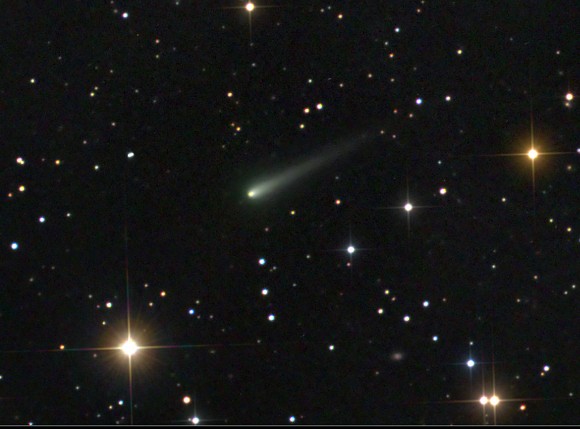Universe Today - Bob King, 9/28/13
Another great photo of the “greening” of Comet ISON taken on Sept. 24 with a 17-inch (43-cm) telescope. Click to enlarge. Credit: Damian Peach
As NASA and the European Space Agency prepare their remote photojournalists – Mars Express, Mars Reconnaissance Orbiter and the Curiosity and Opportunity rovers – to capture photos of Comet ISON’s flyby of Mars early next week, amateur astronomers continue to monitor and photograph the comet from backyard observatories across the blue Earth. Several recent color photos show ISON’s bright head or nucleus at the center of a puffy, green coma. Green’s a good omen – a sign the comet’s getting more active as it enters the realm of the inner solar system and sun’s embrace.
Sunlight beating down on the comet’s nucleus (core) vaporizes dust-impregnated ice to form a cloud or coma, a temporary atmosphere of water vapor, dust, carbon dioxide, ammonia and other gases. Once liberated , the tenuous haze of comet stuff rapidly expands into a huge spherical cloud centered on the nucleus. Comas are typically hundreds of thousands of miles across but are so rarified you could wave your hand through one and not feel a thing. The Great Comet of 1811 sported one some 864,000 miles (1.4 million km) across, nearly the same diameter as the sun!
More: UniverseToday.com


